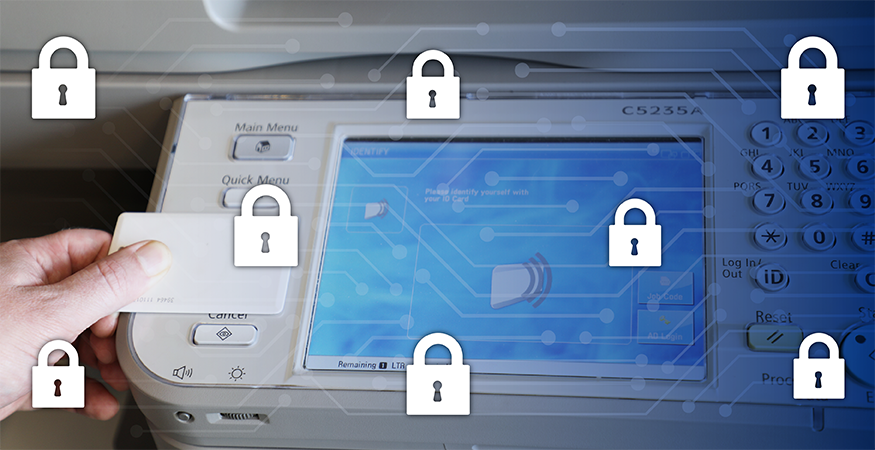A printer is basically a small server on your network. It has network services, and, in some cases, a hard drive for data storage. Copy machines are even more capable and dangerous. In many cases, a copier will store a digital copy of everything it scans, copies or prints on an internal hard drive. These images are accessible over a network by anyone with access to the machine.
Sure, having a networked printer at your business is common these days. However if not secured, anyone with network access (or Internet access, if the network that the printer is connected to is publicly available) could potentially access the printer and many of its functions.
A better idea is to secure your networked printers. It will save you from the potential of cyber hackers accessing your network through a printer.
Did you ever wonder how a cyber hacker launches a worldwide attack?
They locate a vulnerability and exploit it. While there are numerous possible entry points into an organization that a cyber hacker could target – unsecured printers are one of them.
CyberNews, an independent media outlet, wanted to show that networked printers are often left unsecured and vulnerable to cyber threats. To launch their attack, CyberNews searched for open devices that used common printer ports and protocols. After filtering out most of the false positives, they counted more than 800,000 printers that they had the potential to access. After selecting a sample of 50,000 of the open printers a printing script was sent to the devices. Almost 28,000 of the unsuspecting printers responded and were forced to print out a short 5-step guide on how to secure a printer.
Sounds simple? For a cyber hacker, it is. These targeted organizations failed to put basic security in place on their printer networks. The result was a global hacking that was executed in a matter of minutes. Fortunately, this attack was benign – it was meant to bring attention to the issue of unsecured printers. Malicious hackers, on the other hand, would have had more destructive intentions.
As with all devices connected to the internet, printers without appropriate security measures in place have the potential to be hacked, infected with malware or be hijacked by denial of service attacks that can debilitate the Internet itself. While larger companies attract the most attention from national media, small and medium-sized businesses (SMBs) are also at risk of having their data breached. In fact, cyber attackers often attack SMBs in the hopes that they don’t have the knowledge or resources to secure their networked devices – such as printers.
Here’s how to secure print in three steps:
Step 1: Survey Your Print Network
Security begins by taking a big-picture view of your print network. Map all your devices and check to see that data is secure at every stage of the workflow – from the data path along the network to the device itself.
To do this, you’ll need to do two things. First, control access to the printer and its functions at the group, individual, and activity level. And secondly, always include printers in all of your standard network security measures and policies.
Step 2: Put the Security in Place
Use all available tools to protect sensitive documents from loss or theft. This includes cybersecurity tools, as well as print management software which includes print-specific controls and auditing.
Be sure to:
- Update and upgrade your printers to keep on top of security improvements
- Password-protect your printer using a strong password
- Implement user-access restrictions to discourage unwanted users
- Always install manufacturer software
RELATED: How to Add a Network Printer
Step 3: Educate Your Employees About Print Security
Your employees are a key resource to keeping your printers and other networked devices safe from threats. Take the time to educate your employees about print security and how they can help keep your network secure.
In addition, we often recommend the use of print management software. PaperCut and uniFLOW are two popular solutions. In this manner, print jobs are only finished when the user is at the machine to release it from the print queue. That way, confidential information cannot be stolen from a printer tray.
Your Partner for Print Security Concerns
Whether you are looking to secure your small, medium or large business printer network, or need guidance with managing your printer network efficiency, enlisting the help of a trusted Managed Print Services provider can help! Gordon Flesch Company has the expertise and industry-experience you need to help ensure that your printers stay safe from both internal and external security threats.
Want to learn more? Download your free copy of our Cybersecurity for Your Printer.







